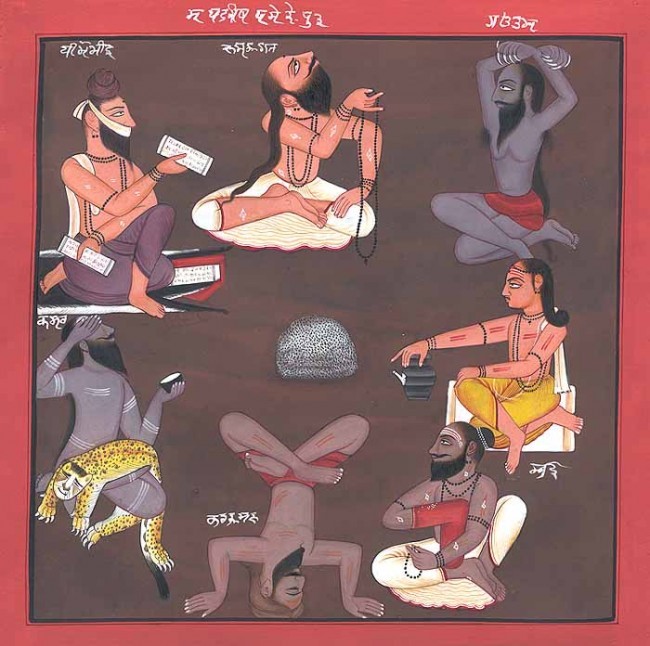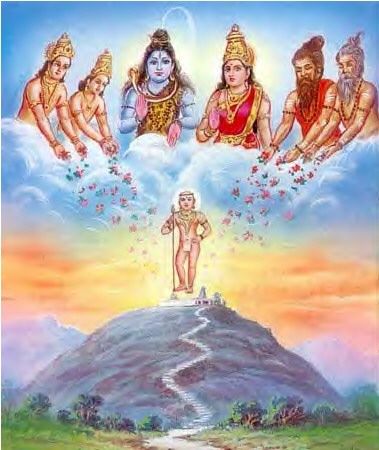 Submitted by INDIA - Exec. Admin. on
Submitted by INDIA - Exec. Admin. on

Food for thought once again:
By Prithviraj Rathod
http://www.articlesbase.com/religion-articles/hinduism-was-founded-by-saptarshis-4086378.html
Founder of Hinduism, the world's third largest religion with 800 million followers, is a topic of one of the biggest mysteries of World History even today. When confronted with this question on who founded Hinduism, answers range as follows:
"Relatively little is known about the beginnings of Hinduism or its founders, as it predates recorded history."
"Hinduism - as I see it - is a coming together of various doctrines and philosophies. To find out the exact origins of Hinduism is a bit pointless, I think. It is like asking - Where did the Ocean Originate"
"Hinduism has no beginning--it precedes recorded history. It has no human founder. It is a mystical religion"
Here is the first ever look on the founder of Hinduism.
Just as there has been a huge amount of migration in the last four centuries from all over the world to United States and other North American provinces, there was a time thousands of years ago, when huge and gigantic rivers like Saraswati were wetting Indian lands, India was the preferred choice of destination for migration. While a lot of places in the world were covered with ice, the Indian subcontinent, with its mighty rivers and its relatively tropical climate, offered the most ideal place for settlements and habitations. Huge number of tribes used to frequently migrate onto the Indian subcontinent in large numbers. Each incoming community had its own tribal deity and the environment became highly polytheistic with every community of few hundred or thousand individuals having its own God. With thousands of deities present all over the place, the essence of religion itself was completely lost. It was necessary to arrest this polytheism and bring some sanity. That's when an institution called Saptarshis was formed.
Hinduism originated from the efforts of a well-formed organizational institution headed by Seven Sages, called Saptarshis, who aimed at arresting the excessive polytheism resulting from these migrations. Just as we have Pope for Christianity today, Hinduism, from the beginning, had this institution of seven sages who were mentioned in the Hindu scriptures as the patriarchs of the religion. They used certain scriptures called Vedas to arrest polytheism, and took excessive pains to integrate all these different deities under one hood of a universal religion. They very strictly guarded the Vedic body of knowledge, and the copy of the Vedas available with them was considered to be the final copy.
If a new tribe entered into India and if they wanted their deity to be considered as a Hindu God recognized by the seven sages, they had to declare their deity as the visual manifestation of one of the gods mentioned in the Vedas – this was how the integration was done. Nobody would be forced to integrate their god or goddesses with the Vedic divinities, but once they settle in India, without such integration, their deity would at best be considered as pagan and would not be accorded the due respect by the devotional community. No person from any other tribe would ever bow before the nonintegrated divinity. And most importantly, the divinity is not considered to be recognized by the Saptarshis or seven sages, the elite sages who were considered as the god's manifestations on earth. And any Upanishads, Puranas, and all other cultural practices related to the Vedic deities would not be applicable to the nonintegrated divinity. Any festivals or celebrations as applicable to the Vedic deities would not be applicable to the nonintegrated divinity. Without all these benefits, the followers of the nonintegrated tribe would start getting a feeling of theirs being a pure pagan worship; they therefore would almost without fail consent to integrate their deity with the Vedic divinities. This was the way in which a large number of deities were integrated into the Vedic religion using the means of Vedas.
Any changes to the Vedas were needed to be approved by this elite group of sages. If the reasons were justified, they approved the changes and incorporated them into the Vedas. Otherwise, they rejected it and kept the Vedas intact without any contamination. From what appears, they were extremely strict about changes to the Vedas. Even to this day of Hinduism, a word in Veda is normally considered as the final authority to the literal T. And this faith in Vedas was built upon a tradition where the Vedas were very strictly and jealously guarded from any changes whatsoever, unless the change really justified it. Some super human justification was required to have them changed. Any changes, to the extent possible, were always added as appendages rather than their being incorporated into the Vedas. So we have Brahmanas, Aranyakas, and Upanishads as appendages to the Vedas. As more and more philosophy developed, all of them got incorporated into this body as appendages.
It is this institution of seven sages who founded Hinduism, by expending a large amount of effort over thousands of years in unifying a large number of traditions from across civilizations into one single religion of Hinduism that we see today. The Hindu trinity, the Hindu divine hierarchy, the Hindu festivals, and everything else that we see today were formulated by them. It is they who inserted Purusha Sukta, Narayana Sukta, and Sri Sukta into the Vedas – these hymns, which are so important to the religion today, were once not part of Vedas. These hymns were the means by which the integration was done.
The names of the Saptarshis carried over from one generation to the next. For example, if Kasyap dies, his son would take on the name of Kasyap and get inducted into the Saptarshis. Once in a while, for some reason, like one of the seven rishis dying without having any children, the names of the one or more of the rishis changed, giving us a different set of Saptarshis.
The religion got so excessively dependent on these sages that they started being considered as the representatives of the creator on earth. This slowly led to their deification and they started being mythicized. They were declared as the mind born sons of God. Subsequently, they were equated with the most evolved light beings in the creation and the guardians of divine laws. Further deification of their attributes led to the addition of more and more myths and halo around them. This sort of excessive mythicization finally led to the relegation of this institution from the purview of the real world into the realm of mythology, to the extent that they started being regarded as mythical personalities.
This institution got destroyed at the time of the three hundred year severe drought of 2200 BC. At that time, most of the Indians, devastated by the drought, left India for foreign shores, especially to European lands. Because of the severe suffering that people underwent because of the drought, people lost faith in a useless God who did not answer their prayers, leading to the rise of atheistic cults on the subcontinent. The institution of seven sages got destroyed in this religious upheaval and societal turbulence, as a result of which, the origins of Hinduism have once and for all become lost in the dungeons of time, becoming the source of intense mystery to this day.
Saptarshis are the founders of Hinduism. The Seven Sages laid down the Origins of Hinduism.

The sages Kashyapa, Atri, Bharadwaja, Viswamitra, Gautama, Jamadagni and Vasishta with sage Valmiki from the play play Srimad Ramayana Goshti.

- 2208 reads